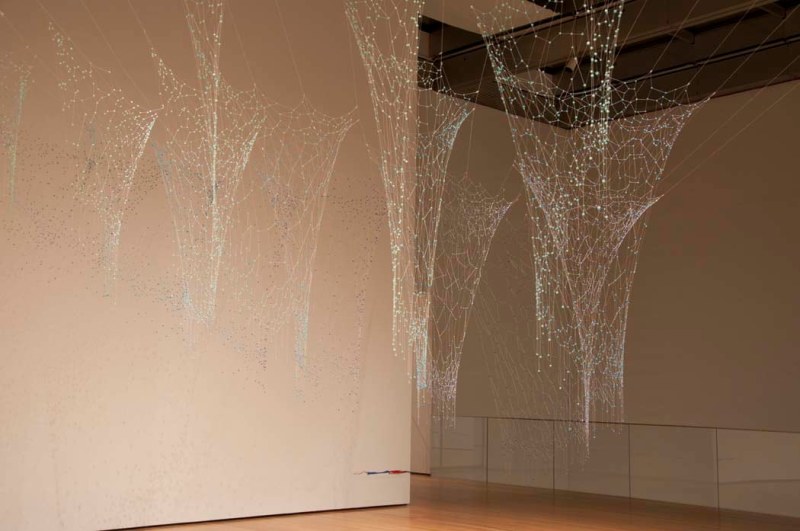
Installation art may be fast becoming popular with young Indian artists, but Ranjani Shettar has an extensive repertoire to prove that it was her chosen medium long before it "emerged" in the country. Dabbling in it for a decade now, Shettar opines it's a style best suited for her oeuvre. "Call them installations or call them sculptures, I am OK with either term. The fact remains that they convey best what I feel. I began my artistic endeavors with them, staying that way when I started showing professionally. I'm still making what I want."
And there is certainly something about the Bangalore-based artist's works. From her early 'Thousand Room House' (2000) that bore a resemblance to a honeycomb to her recent creations like 'Touch me Not' (2006-07) inspired by paddy blowing in the breeze, her life-sized installations take a leaf out of nature's book, perfectly blending art sensibilities with aesthetics. Showcased in several museums worldwide, including the San Francisco Museum of Modern Art's (SFMoMA) permanent collection, Shettar's works have increasingly grabbed eyeballs since she first started showing. And as her 'Just a Bit More' makes its way to New York's Museum of Modern Art (MoMA), as part of the group show 'On-Line: Drawing through the Twentieth Century,' the viewers get a glimpse of what gives Shettar's work its distinct quality exactly.
Though its massive size definitely creates an initial impact, it is the combination of subtle elements that reinforce 'Just a Bit More'. Hand-rolled beeswax pigments and strings dyed in tea, create seven webs suspended from the ceiling, stopping short of the ground. While space enters, envelops, and exits the mesh, the blue coloured pigments conjure up images of rain falling in silvery sheets. Light reflects and bounces off the pigments, adding another refulgent dimension, and the creation comes together to become a beautiful weave, at once strong and delicate. "I have often reflected nature in my works," says Shettar about the installation, which is also an extension of her previous works 'Vasanta' (2004) and 'Hoomalae' (2005). "Though I am not an activist, I am certainly concerned. Hence, I choose my nature and present it in my works."
Perhaps it is the universal appeal of Shettar's work that is being in private collections around the world. Deepak Talwar, of the New York and Delhi-based Talwar Art Gallery that represents Shettar concurs that she is probably one contemporary Indian artist who has shown her works at maximum museums worldwide.
"Ranjani is doing something that's very unique. There is a sense of intimacy and texture to her work that's hard to find."
Exemplifying this is the ongoing exhibition at the Liverpool Biennale, where on display is Aureole, a bronze vine sculpture climbing and descending a wall and changing the geometry of the building with its organic touch. And the site-specific installation, Red Breeze, Green Breeze (2005) in Norwich, England, was inspired by bunches of party-hidden bluebells. Shettar went on to tie red fabric on trees at once blocked and unblocked views, the installation was never seen the same way, changing each time the viewer moved, giving it several dimensions at once. Naturally, it is organic materials like lacquer, wood, beeswax, rubber, cotton, and resin that are soft-used ingredients.
"In my overall creations, I would say there is also a reference to society that I try to make," says Shettar clarifying her ideas, a fact best visible in Me, no, not me, buy me, eat me, wear me, have me, me, no, not me, housed at the SfMoMA. Made out of old car bodies picked from junkyards and woven into sheeted layers to form birds and chalices, the work spoke about consumerism and its aftermath.
And as her creations become more and more popular, Talwar adds that they may also soon be housed in a popular museum in Asia and in two museums in the States. "I think it has to do with the fact that there is something in her works that moves you spiritually." And that's what art's all about.
-Preetika Mathew Sahay